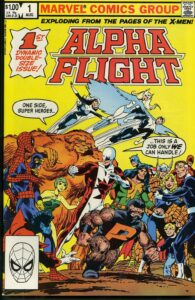by Stevie Horn
University Archives and Special Collections, University of Saskatchewan
Article: Dupont, Christian & Elizabeth Yakel. “’What’s So Special about Special Collections?’ Or, Assessing the Value Special Collections Bring to Academic Libraries.” Evidence Based Library and Information Practice [Online], 8.2(2013): 9-21. https://ejournals.library.ualberta.ca/index.php/EBLIP/article/view/19615/15221
I was pleased to have the opportunity to lead the last C-EBLIP Journal Club session of the season. I chose an article which looked at the difficulties in employing performance measures to assess the value of a special collection or archives to the academic library. The article has some failings in that it is written largely from a business perspective, and uses special collections and archives interchangeably in a way that becomes problematic if you consider the archives’ responsibility as a repository for institutional records (which go through many different phases of use)—however, it did serve as a useful springboard for our talk.
What interested me was that those present immediately latched on to the problem of “What about preservation value?” when considering the article’s model of measuring performance. The article poses that the best way to measure a special collection/archives’ “return on investment” is not simply by counting the number of times an item is used (a collection-based method), but rather by reporting the number of hours a user spends working with an item, and what the learning outcomes of that use are determined to be (a user-based method) (Dupont and Yakel, 11).
In some ways, a user-centric approach to measuring performance in archives and special collections makes good sense. A single researcher may spend five weeks exploring fifteen boxes, or taking a close look at a single manuscript, and so recording the user hours spent may prove a more accurate measure of use. To reinforce this, there are a number of difficulties in utilizing collection-based metrics with manuscript collections. Individual documents studied within an archival collection are almost impossible to track. Generally a file is treated as an “item”, and the number of files in a box might be averaged. The article points out, accurately, that this imprecision renders collection-based tabulation of archival documents, images, and ephemera virtually “meaningless” (Dupont and Yakel, 14).
However, if the end goal is determining “return on investment”, user-centric data also leaves out a large piece of the picture. This piece is the previously mentioned “preservation value”, or the innate value in safeguarding unique historical documents. Both collection-based and user-based metrics record current usage in order to determine the value of a collection at the present time. This in-the-present approach becomes problematic when applied to a special collections or archives, however, for the simple reason that these bodies not only preserve the past for study in the present, but also for study in the distant future.
To pull apart this problem of using present-based metrics to measure the worth of a future-purposed unit of the academic library, we look at the recent surge in scholarship surrounding aboriginal histories. As Truth and Reconciliation surfaces in the public consciousness, materials which may have been ignored for decades within archival/special collections are now in high demand. Questions of this nature accounted for approximately forty percent of our usage in the last month alone. Had collections-centric or user-centric metrics been applied for those decades of non-use, these materials would have appeared to be of little worth, and the special collections/archives’ “return on investment” may also have been brought into question. The persistence of archives and special collections in preserving unique historic materials regardless of patterns of use means that these materials can play a role in changing perspectives and changing lives nationwide.
If, as Albie Sachs says in his 2006 article on “Archives, Truth, and Reconciliation”, archives and special collections preserve history “for the unborn . . . not, as we used to think, to guard certainty [but] to protect uncertainty because who knows how the future might use those documents”, might not the employment of only present-centric metrics do more damage than good? (Sachs, 14). And, if the value of an archives or special collections cannot be judged solely in the present, but must take an unknown and unknowable future into account, perhaps the formulation of a truly comprehensive measure of “return on investment” in this field is impossible.
Sources:
Dupont, Christian & Elizabeth Yakel. “’What’s So Special about Special Collections?’ Or, Assessing the Value Special Collections Bring to Academic Libraries.” Evidence Based Library and Information Practice [Online], 8.2(2013): 9-21. https://ejournals.library.ualberta.ca/index.php/EBLIP/article/view/19615/15221
Sachs, Albie. “Archives, Truth, and Reconciliation”. Archivaria , 62 (2006): pp. 1 -14.
This article gives the views of the author(s) and not necessarily the views of the Centre for Evidence Based Library and Information Practice or the University Library, University of Saskatchewan.


